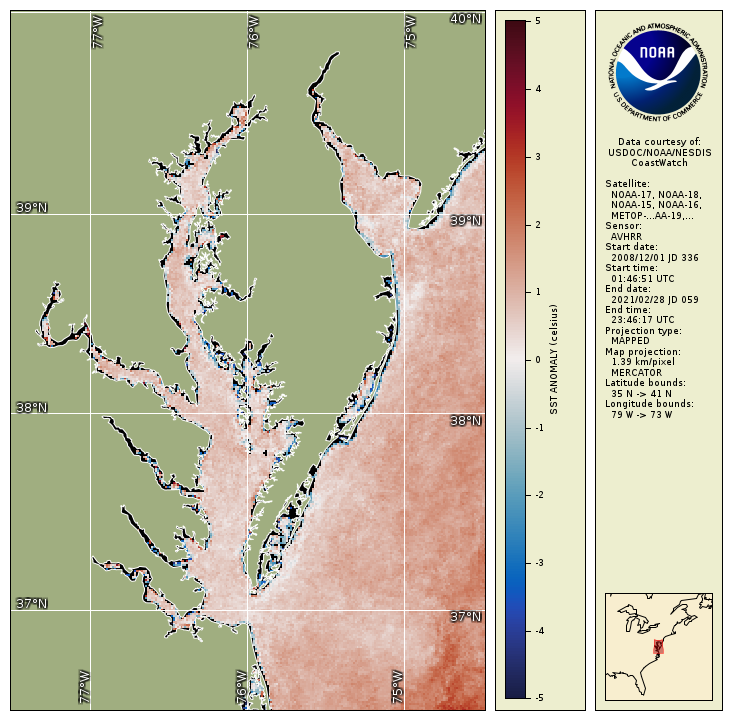Scientists use data from CBIBS buoys, NOAA satellites, and other sources to monitor conditions in the Chesapeake Bay, and to analyze how they may differ from average. When conditions are different than average, it can affect species that live in the Bay, in both positive and negative ways.
Overall, in winter 2021-22 (December 2021-February 2022), the Bay saw:
- Slightly warmer than average water temperatures
- Roughly average salinities
- Below-average freshwater flow

Sea surface temperatures, as observed by NOAA Satellites from December 2021 through February 2022, show that overall, water temperatures were just slightly warmer than average.
When cooler water temperatures persist through the winter into the early spring, striped bass can get a boost. That’s because it gives copepods, a key prey for striped bass larvae, a longer growing season. That way the striped bass larvae have lots of nutrition when they need it. This winter, with the water temperature close to average, we’ll need to wait into the early spring to see what water temperatures do to determine how that might affect the striped bass population.
Another parameter that affects striped bass is freshwater flow. Higher freshwater flow (from rain and melting snow) helps push zooplankton that striped bass larvae like to eat down the creeks and rivers to where the larvae are. This flow essentially moves the buffet closer to the striped bass. If the below-average freshwater flow we have seen this winter continues into the spring, it could make it harder for striped bass larvae to find this food.
Salinity up and down the Bay was, with some fluctuations, near average overall. Salinity can play an important role in oyster survival and reproduction. Generally, higher salinity leads to a bigger juvenile oyster population. With salinity numbers near average, we don’t anticipate a big jump in the oyster population resulting from overwinter conditions.
For more information on fall 2021 conditions and how they may have affected living resources in the Chesapeake Bay, see the full scientific seasonal summary.


